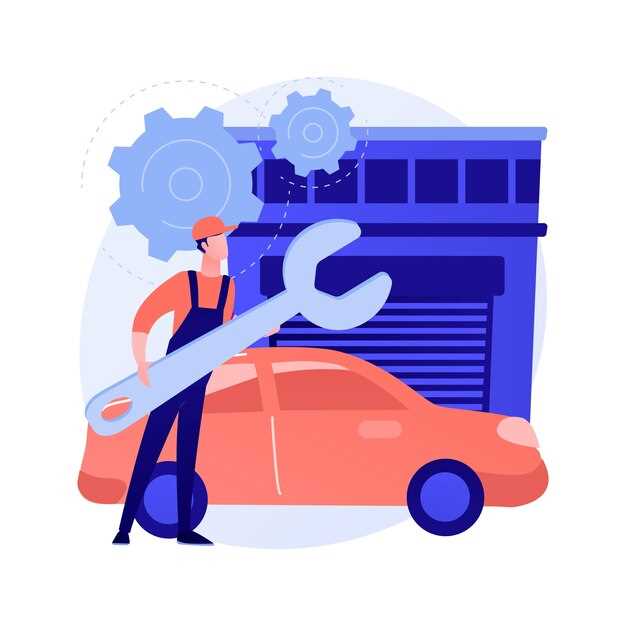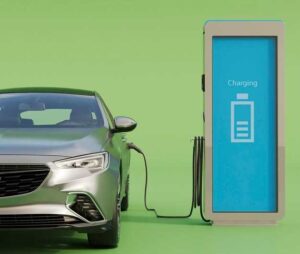Regular maintenance is a primary factor in managing the costs associated with supercar ownership. Expect to allocate a monthly budget between $500 to $1,500, depending on the make and model of your vehicle. This figure includes routine service, including oil changes, tire rotations, and brake inspections. Documenting service records increases resale value and ensures that your supercar performs optimally.
Understanding the unique needs of supercars is crucial. Many high-performance vehicles utilize specialized parts that can significantly inflate repair bills. For example, a simple brake job on a supercar can range from $1,500 to over $7,000, depending on the materials used. Always source parts from authorized dealerships or respected aftermarket suppliers to maintain warranty coverage and vehicle integrity.
Don’t overlook insurance costs. Premium insurance tailored for high-performance vehicles can range from $2,000 to $10,000 or more annually. This discrepancy arises from varied factors such as driving history and vehicle value. Always compare quotes from multiple providers and consider customizing your coverage to fit your specific needs.
Preparing for unexpected repairs is part of owning a supercar. Setting aside a separate fund for emergency expenses can save you from surprises down the road. Aim for at least 10% of your vehicle’s value, giving you a safety net without compromising your finances. A proactive stance on maintenance helps prevent costly issues and ensures your vehicle remains in peak condition.
Understanding Routine Maintenance Expenses
Regular maintenance for supercars is paramount for performance and longevity. Allocate about 3% to 5% of the vehicle’s value annually for these expenses.
Oil Changes: Expect to pay between $200 and $500 for high-quality engine oil and filters. Frequent changes enhance engine health.
Tires: Premium tires can range from $1,000 to $3,000 per set. Monitor tread wear closely and rotate tires every 5,000 to 7,000 miles.
Brake Maintenance: Brake pads and rotors typically cost between $1,500 to $4,000 depending on materials. Inspect braking systems regularly for safety.
Fluid Replacements: Coolant, transmission, and brake fluid changes may total around $500 annually. Check manufacturer guidelines for specific intervals.
Aerodynamic and Cosmetic Repairs: Accidents or wear can lead to costs exceeding $10,000 for bodywork and paint. Stay vigilant to prevent minor damages.
Combining routine inspections with documentation aids in predicting expenses. Utilizing a reliable mechanic familiar with supercars can significantly reduce unforeseen costs and ensure that your vehicle remains in peak condition.
The Impact of High-Performance Parts on Costs
Choosing high-performance parts raises maintenance costs significantly. Premium components often come with a higher price tag. For example, a quality exhaust system can cost from $1,500 to over $5,000, depending on the brand and materials used. Labor costs also increase due to the expertise required for installation, typically ranging from $100 to $200 per hour.
High-performance parts can also lead to more frequent maintenance. Components such as upgraded brakes and suspension systems may require specialized care, increasing the overall maintenance expenditure. Additionally, these parts can strain other vehicle systems, leading to potential replacements or repairs that wouldn’t be necessary with standard parts.
When planning your supercar budget, factor in the potential higher insurance premiums associated with high-performance modifications. Insurers often view such upgrades as indicators of a higher risk, which can translate into a 10-20% increase in your monthly premiums.
Staying informed about the lifespan of high-performance parts is crucial. Many parts are designed for enhanced performance but may wear out faster, necessitating replacements sooner than factory components. This aspect can add significant unforeseen costs over time.
Consider sourcing parts from reputable suppliers to avoid counterfeit products. Counterfeit components are often cheaper but can result in higher long-term costs due to their poor performance and durability.
In summary, investing in high-performance parts will enhance your supercar’s capabilities but will likely lead to increased maintenance costs and challenges. It’s wise to budget not only for the initial purchase but also for ongoing maintenance and potential repairs that come with enhanced performance upgrades.
Costs Associated with Specialized Mechanic Services
Specialized mechanic services for supercars can significantly impact your budget. Expect to pay between $150 to $300 per hour for skilled labor. Standard maintenance tasks, such as oil changes or brake services, may range from $300 to $1,200. Keep in mind that parts for high-performance vehicles are often sourced from premium manufacturers, driving costs up.
Timing belts and chains replacement can run from $1,000 to $4,000. Ignoring these services can lead to catastrophic engine failure. Suspension maintenance, including alignments and shock replacements, can add another $1,000 to $3,000, depending on the brand and model.
Track day preparation or racing setups increase costs further. Services may include tire swapping, brake pad changes, and fluid checks, typically adding $500 to $2,000 to your total. Regular inspections can prevent more significant issues down the line, so budgeting for comprehensive diagnostics, often priced around $200 to $500, is wise.
Finding a reliable mechanic familiar with your supercar’s specific requirements enhances your ownership experience. Investigate reviews and seek recommendations to ensure you are not only getting quality service but also a fair price for your vehicle’s specialized care.
Insurance Considerations for Supercar Maintenance
Thoroughly review your insurance policy to ensure it covers specific aspects of supercar maintenance. Regular maintenance checks can help avoid costly repairs, but if damage occurs, the right coverage will alleviate financial strain.
Consider comprehensive insurance that includes parts and labor for specialized repairs. Many supercars require bespoke components that may not be readily available, leading to significant replacement costs. Ensure your policy accounts for these unique expenses.
Another key point is to select a policy that covers high-performance modifications. If you upgrade parts for enhanced performance, check that these modifications remain insured. Many standard policies may not cover aftermarket additions, which could leave you exposed to unforeseen costs.
When claiming an accident or damage that affects your supercar’s condition, be prepared for a meticulous process. Insurers will often involve experts to assess damage and verify claims, which can prolong repair timelines. Familiarize yourself with procedures to expedite claims efficiently.
Keep an updated inventory of your supercar’s value, including enhancements and upgrades. As market values fluctuate, maintaining accurate records helps ensure you’re not underinsured. Regularly appraise your vehicle with a qualified professional.
Lastly, seek insurers who specialize in high-value vehicles. Their experience can provide tailored coverage and service that standard providers may lack. Explore several options and ask directly about supercar maintenance provisions to find the best fit for your needs.
Challenges in Sourcing OEM vs. Aftermarket Parts
Opt for OEM parts for guaranteed compatibility and quality. Each OEM component is designed specifically for your supercar, ensuring optimal performance. However, sourcing these parts can take time, especially for rare models. Manufacturer lead times can stretch from a few weeks to several months.
On the other hand, aftermarket parts offer a quicker solution, often readily available. Many aftermarket suppliers provide a variety of price points; however, quality can be inconsistent. Before making a purchase, check reviews and seek recommendations to avoid subpar parts that may compromise vehicle integrity.
Consider warranty implications as you choose between OEM and aftermarket. OEM parts typically maintain the vehicle warranty, while some aftermarket parts can void it. Always consult with your dealership or a qualified mechanic to understand how your choices affect your coverage.
Pricing presents another challenge; while OEM parts often come with a higher price tag, they can save money in the long run by minimizing repairs due to compatibility issues. Aftermarket parts may be cheaper upfront, but potential failures can lead to additional repair costs.
Evaluate the availability of both types. Popular supercars may have a well-established aftermarket parts market, but rare models might have limited options. Striking a balance between price, availability, and quality is key to maintaining your supercar without unnecessary hassle.
Finally, consult with experts. Mechanics familiar with your vehicle model can provide insights into the best sourcing decision based on performance expectations, reliability, and budget constraints. Their experience can guide you to make informed choices in obtaining parts tailored to your unique needs.
Long-Term Financial Planning for Supercar Owners
Establish a detailed budget that accounts for depreciation, insurance, maintenance, and fuel costs. Create a spreadsheet to track these expenses monthly. Allocate a specific percentage of your income toward these costs to ensure you can manage them comfortably.
Set aside a fund dedicated to unexpected repairs or emergency services. Supercars can require high-cost parts and specialized labor. Aim for at least 10-15% of your vehicle’s value as a safety net for unanticipated expenses.
Research and understand the depreciation rates of your specific supercar model. Some models appreciate over time, but many depreciate rapidly in the first few years. Factor this into your long-term investment strategy; consider using professional appraisal services to gauge value accurately.
Explore resale values before purchase. Keep an eye on the market trends for your model. If you decide to sell, timing your sale can significantly impact your financial return. Selling at peak demand or after a significant service can enhance value.
Investigate different financing options. High-interest loans can become burdensome. Consider financing through your credit union or a bank that specializes in luxury vehicles for better rates. Always compare offers and read the fine print before committing.
Participate in supercar communities or forums. Networking with other owners can provide insights into best practices for maintenance and ownership costs. This shared knowledge helps in reducing future expenses through personal experiences and recommendations.
Keep records of all expenses related to your supercar. Documenting maintenance, repairs, service history, and modifications can facilitate future sales or insurance claims, proving the car’s worth and care level.
Consult with financial advisors who specialize in luxury assets. They can provide personalized strategies tailored to your financial situation, ensuring that your investment aligns with your long-term financial goals.







